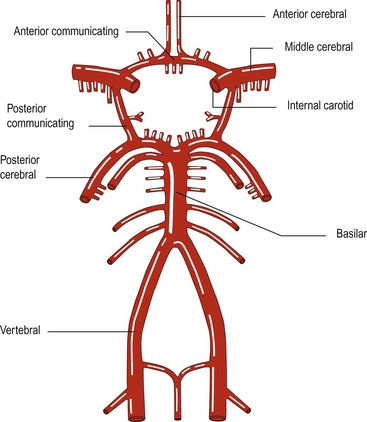Stroke I
Stroke refers to damage to the brain caused by abnormalities of blood supply. This presents with a rapidly developing focal neurological deficit, which may lead to coma or death. If this deficit lasts less than 24 h it is referred to as a transient ischaemic attack (TIA; p. 70).
Pathogenesis
Cerebral infarction accounts for 80% of strokes, 15% are primary intracerebral haemorrhages and 5% are due to subarachnoid haemorrhages (p. 72).
Cerebral infarction
Cerebral infarction results from an interruption in blood supply to an area of the brain. This can be due to (Fig. 1):
Atheroma
The risk factors for atheroma, and other disease resulting from it, are given in Table 1. The most important risk factor is hypertension, with the risk increasing with the blood pressure.
Table 1 Risk factors for atheroma and relative risk of stroke
| Risk factors for atheroma | Relative risk of stroke |
|---|---|
| Hypertension | 5 |
| Diabetes | 2 |
| Smoking | 3 |
| Family history | |
| Cholesterol | |
| Excess alcohol intake | 1–4 |
Atheroma commonly arises at the junctions of arteries, for example the carotid bifurcation and the point where the two vertebral arteries join to form the basilar artery (Fig. 2).
Stay updated, free articles. Join our Telegram channel

Full access? Get Clinical Tree







